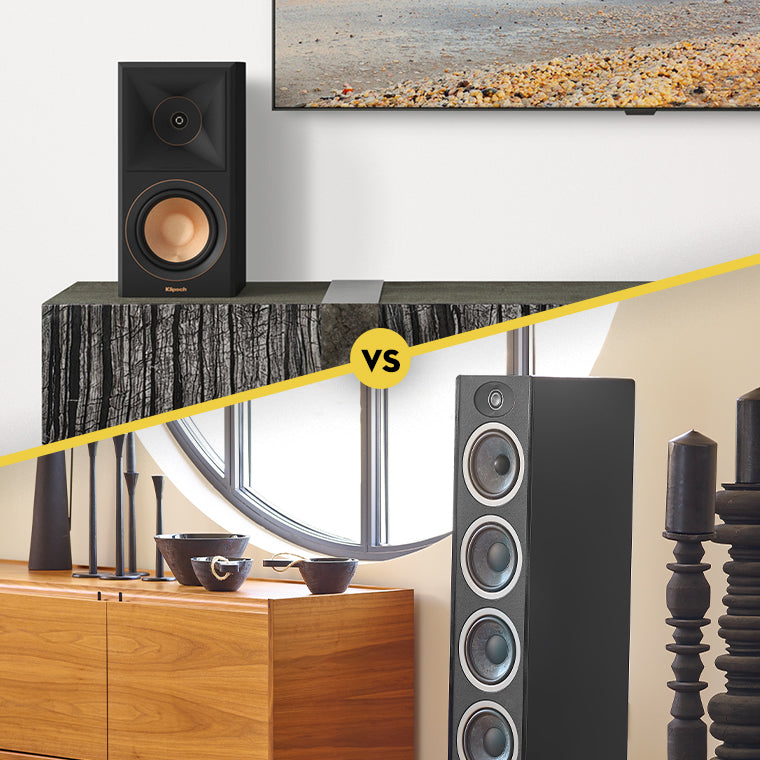When it comes to choosing the perfect speakers for your home audio setup, one of the most common questions we get from clients and customers in our showroom and online comes down to: do I get floorstanding speakers (aka tower speakers) or bookshelf speakers? There are a few key qualifiers we run through that make navigating a home speaker setup fairly straightforward. In this article we'll dive into the world of wooden-cabinet-passive-loudspeakers and explore the differences between these two types, to help guide you to which one better suits your needs and preferences.
Factors To Consider Before Buying
Choosing between bookshelf speakers and floorstanding speakers ultimately depends on your personal preferences, listening environment/room size, and budget. Bookshelf speakers offer space efficiency, versatility, and affordability but may have limitations in bass response and volume capabilities. On the other hand, floorstanding speakers provide immersive sound quality, deep bass response, and higher volume capabilities, but they require more floor space and generally come with a higher price tag. Consider your floor-space limitations, budget, and desired audio experience before making a decision.
Two-Channel Stereo System or Surround Sound Home Theater System?
Floorstanding or Bookshelf? Or Both? It is common in modern surround-sound home theaters to use a combination of bookshelf and floorstanding speakers. Often you will have floorstanding speakers as your front right and front left speakers with bookshelf speakers acting as the “rear” or “surround” channels to a space in the back of the room or behind the listener. When you're considering a simple two-channel stereo system for music listening, however, the setup is generally a single pair of speakers so you're generally choosing between bookshelf or floorstanding options. Both types of speakers can deliver fantastic sound, so choose the one that aligns with your preferences and creates the audio experience you've always dreamed of.
Size and Space Requirements
Floorstanding speakers are well-suited for spacious rooms or home theaters, where their powerful sound and deep bass can fill the area effectively. Since they are large, usually start at around 2 to 4 feet tall, and stand on the floor, sufficient space is needed. Bookshelf speakers are better suited for smaller rooms or setups where space may be a constraint but you're still looking for performance.
Power and Amplification Needs
Floorstanding speakers can handle higher power levels and produce higher volume levels without distortion. Since bookshelf speakers are smaller, their power handling is comparatively more limited. To achieve a fuller range of sound and deeper bass, bookshelf speakers are often paired with a separate subwoofer.
Budget
If you're on a tight budget, bookshelf speakers will generally be more affordable when comparing to floorstanders within the same series. If you have the budget and the space and you like the look, floorstanding speakers will deliver the better performance.








